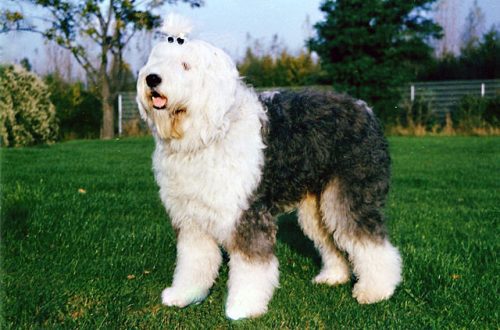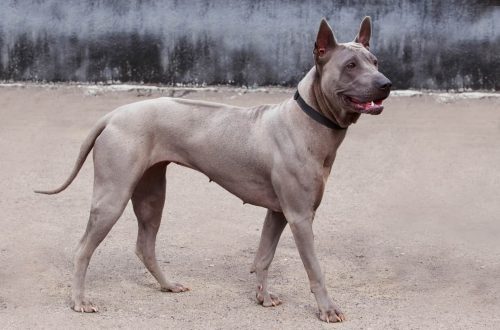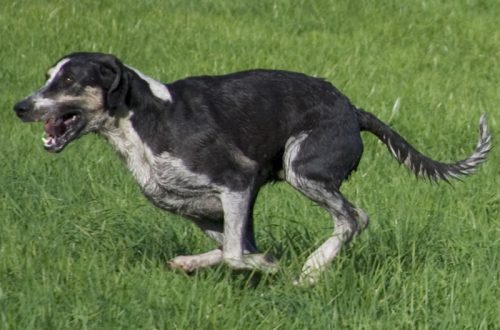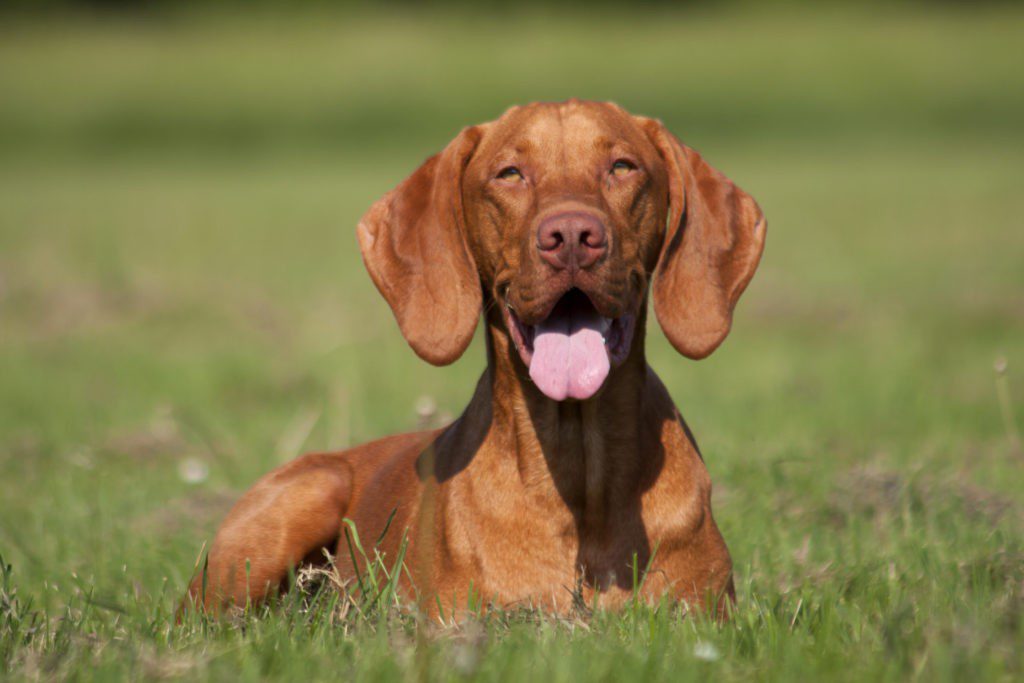
Hungarian vizsla (Rövidszőrű magyar vizsla)
The Hungarian Vizsla is an elegant hunting gun breed. This beauty in a golden-red fur coat will become your personal sun on a cloudy day!
Contents
- Hungarian vizsla – Short information
- Hungarian vizsla – Basic moments
- History of the Hungarian Vizsla breed
- Video: Hungarian Vizsla
- Hungarian Vizsla breed standard
- The nature of the Hungarian vizsla
- Hungarian vizsla – education and training
- Care and maintenance
- Health and disease of the Hungarian survivors
- How to choose a puppy of Hungarian vizsla
- The price of the Hungarian vizsla
Hungarian vizsla – Short information
- Breed Name: Hungarian Vizsla
- Country of origin: Hungary
- Weight: males 20-27 kg, females 18-25 kg
- Height (height at withers): males 58-64 cm, females 52-60 cm
- Lifespan: 12-15 years
Hungarian vizsla – Basic moments
- Short-haired cops are considered universal pets: not only loyal friends, but also excellent hunters grow out of them.
- These dogs love to be the center of attention of the whole family, but tend to single out a single person who is considered the owner.
- Hungarian survivors cannot be called introverts: animals cannot stand loneliness and, out of boredom, can ruin interior items.
- Representatives of the breed do not cope well with the role of a guard: dogs are not aggressive towards strangers and rarely attack.
- Pointers need an active owner who is able to allocate about 3-4 hours for a walk with a pet.
- Hungarian vizslas get along in families with children or even with other pets, with the exception of ornamental birds and rodents.
- Dogs can be trained with the right approach to learning commands and the timely intervention of a specialist.
- The Hungarian Vizsla is one of the few hunting breeds that even a novice dog breeder can handle.
The Hungarian vizsla evokes a feeling of nostalgia for those times when in aristocratic society they paid special attention to hunting, accompanied by graceful and lean dogs. Animals helped to detect injured prey thanks to their sensitive sense of smell and sharp eyesight. Now the hunting grounds exist only on the pages of books, but the Hungarian vizsla continues to be popular. Neat and at the same time muscular physique, smooth coat of amber color and a meaningful look – these dogs look like statues come to life, on which a skilled craftsman worked. Vyzhlas are loyal and good-natured, not hostile to strangers, but will stand up for the owner without hesitation.
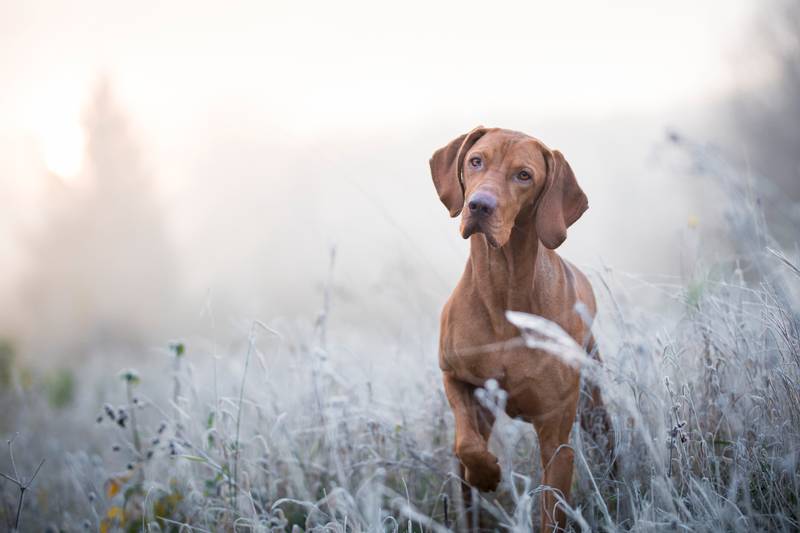
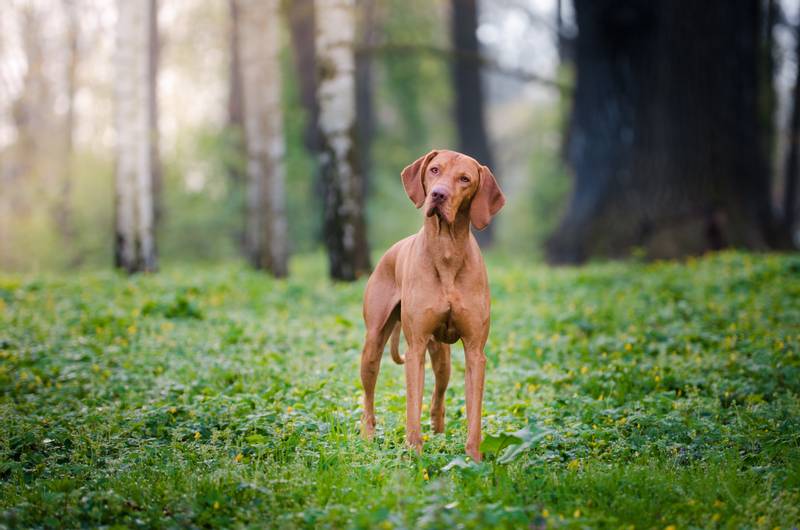
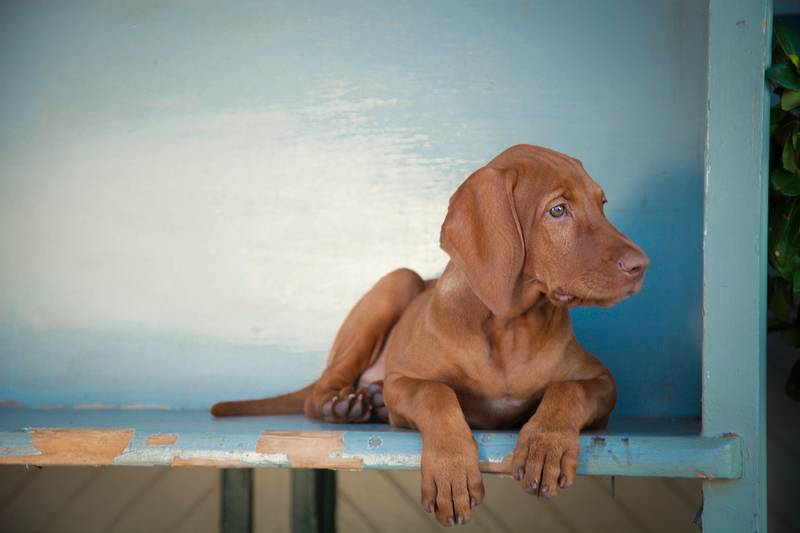
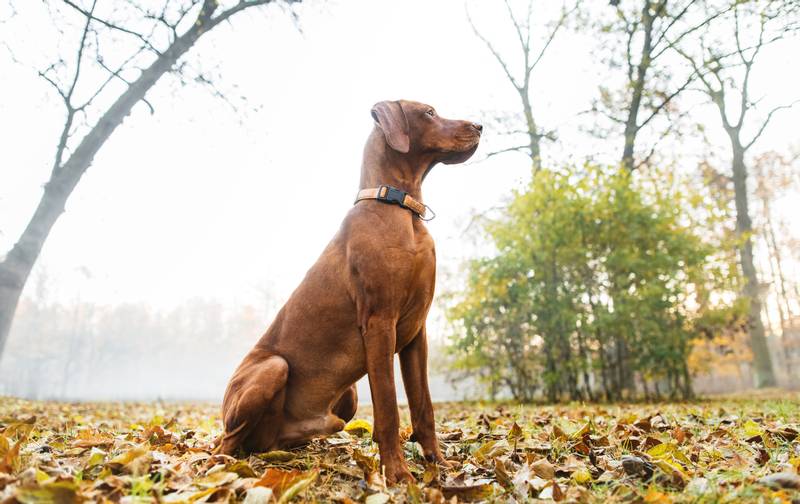
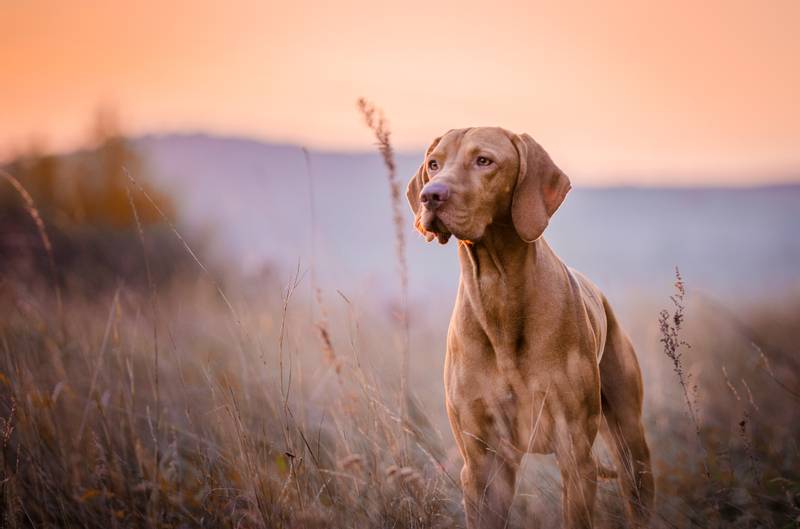
History of the Hungarian Vizsla breed
The history of four-legged hunters began in the 9th-11th centuries, when their ancestors – pointing dogs – first appeared on the territory of Hungary. At that time, the country had not yet gained autonomy and was part of Pannonia, a Roman province, where the climate was damp and unsuitable for comfortable living. This territory became home to the Magyars, whose main occupation was hunting. For baiting game, the nomads bred dogs of a sandy color, which were excellent at navigating the terrain and were adapted to the weather conditions of Pannonia.
Like the Magyars, these animals were distinguished by a love of freedom, so they often left their homes and spread throughout the province. The cops, who migrated to neighboring regions, remained invisible against the background of aboriginal and already established breeds.
It is not known how the fate of the Magyar dogs would have developed if they had not attracted the attention of Hungarian hunters with their grace and dexterity. To improve the working qualities of the animals, they were crossed with cops of eastern origin. The appearance of the dogs has also changed: thanks to mating with Russian canine greyhounds, their coat has acquired a lighter shade. In the first half of the 16th century, the future survivors were influenced by the Saluki, the sandhounds that accompanied the Turkish troops during the occupation of Hungary in 1526.
Purposeful and random matings led to an amazing result – the appearance of golden hunting dogs with an established genotype. They were highly valued by the Hungarian nobles, who used the animals in baiting fur-bearing animals or birds. The ancestors of the survivors were considered universal hunters who coped with the work in the forest or field and fearlessly rushed into the water for wounded game.
In addition to excellent abilities for gunfighting and falconry, the dogs were notable for their energetic mind and spectacular appearance. The amber color not only pleased the eye, but also played an important role. Thanks to a conspicuous “fur coat”, the survivor stood out against the background of the landscape, being at a considerable distance. At the same time, cops with a reddish tint of wool mainly took part in falconry, while in the forest – with gold. Subsequently, the two lines of the breed mingled with each other.
The selection of animals was taken under careful control in the 18th century. The initiator of the development of a new breeding program was a breeder named Zai. Under his leadership, in the Hungarian city of Zaingroce, work began on improving the parameters of short-haired cops, which took more than 150 years. Hanover hounds, pointers, kurtshaars and even poodles have become promising “material” for mating . As a result of selection, it was possible to improve the exterior and field qualities of the Hungarian vyzhl – the future national treasure of the country.
In the 19th century, golden hunting dogs became less popular, giving way to German pointers. In order to preserve the breed, the import of cops from Europe was banned until 1880. With the disappearance of the “cynological barrier”, the mass import of pointers to Hungary was resumed. The efforts of the breeder Zai and his followers were in vain. Now the existence of short-haired cops was remembered only by their ardent lovers, who continued to keep dogs. From these few purebred survivors, the modern line of the breed originated. In most pedigrees, you can find a mention of a bitch named Katya or a native of the Nimrod kennel.
Increasingly, Hungarian vizslas were found in European countries, as well as in Canada and the USA. Active export of dogs to America began after 1935, when representatives of the International Cynological Federation (FCI) entered the breed into the official register and approved its standard. US cynologists actively took up the selection of survivors and soon increased their numbers, thereby protecting them from complete extinction. Although pointers attracted more endurance, the Hungarian cops were distinguished by their ability to hunt in any terrain – both on land and in water.
Despite the measures taken, the number of survivors decreased significantly with the outbreak of World War II. Freed from the yoke of fascism, the Hungarians were guided by hopelessness and fear, which is why they made a cruel decision – to kill all the dogs so that they would not become a military trophy of soldiers. Fortunately, the animals were partially preserved in neighboring countries, from where they began to conquer the globe.
The name of the breed comes from the Hungarian word vizsgál, which means “analyze, search, study.” Indeed, these dogs have an amazing ability to find prey even in dense thickets. Now Hungarian survivors are rarely used for their intended purpose, but the animals still managed to win the love of cynologists all over the world thanks to their complaisant nature and the ability to become an indispensable companion.
Video: Hungarian Vizsla
Hungarian Vizsla breed standard
The Hungarian Vizsla is a medium-sized gun dog breed. These hunters fascinate at first sight: they have a muscular and not devoid of light body, long graceful paws, a noble posture, a proudly raised head and a purposeful look. Even with a fleeting acquaintance with the survivor, it is difficult not to notice her refined nobility.
The height of the animal at the withers and its body weight are fixed by the standard: for males – 56-66 cm and 20-27 kg, for females – 51-61 cm and 18-25 kg. At the same time, it is still not worth focusing on the approved parameters: the size is less important in comparison with the general symmetry and balance of the Hungarian vizl. The breed is distinguished by a pronounced sexual type: female individuals look more elegant than “men”.
Head and skull
The classic hound type of head determines its characteristics: covered with elastic skin, dry, with clear rounded outlines. The dog’s skull is slightly domed and broad. A small indentation extends from the bridge of the nose to the occipital protuberance. The brow ridges of the Hungarian Hound are moderately pronounced. Females have a less massive skull than males.
Muzzle
The muzzle of the Hungarian vizsla is quite large and long, has a U-shaped ending. The transition between the broad forehead and bridge of the nose is smoothed out. The straight back of the nose ends with a mobile lobe, pigmented in a color one tone darker than the color of the vizsla. Wide nostrils are a characteristic feature of hunting dog breeds. When viewed from the side of the animal, it is noticeable that the nose is in line with thick and tight lips. The shade of their edge and the outer side of the gums matches the color of the nose of the Hungarian Hound. The wings do not sag, the chewing muscles are developed.
Ears
The ears of the Vizsla are V-shaped with rounded ends and medium set. Their length is ¾ of the length of the head. The ears are slightly shifted back, in a calm state they lie close to the cheeks. When the dog is alarmed by something, the ears, rising at the base, turn towards the muzzle.
Eyes
The eyes of the dog are medium in size, have an oval shape and a slanting incision. Dry eyelids are adjacent to the eyeballs, completely hiding the whites. The iris is colored brown. Dark shades are preferred. The look is lively and insightful.
Jaws and teeth
The strong jaws of the Hungarian vizsla form a regular scissor bite with no gap between the incisors. The teeth stand upright, while the lower ones are hidden by the upper ones. The complete formula includes 42 teeth.
Neck
Oval in cross section, of medium length, with well-defined muscles and a convex nape. Its dimensions are proportional to the size of the dog. The dewlap – loose skin on the throat – is absent.
Frame
The muscular and flexible body of the Hungarian Vizsla is of an elongated format: the length of the body exceeds the height of the dog. The wide chest is formed by moderately rounded and set back ribs. The pronounced withers pass into a strong straight back with relief muscles. The loin protrudes slightly above the back, turning into a sloping and rounded croup. The bottom is smoothly curved towards the hind limbs.
Tail
Tapers from base to tip, set low. The undocked tail is saber-shaped or straight; when moving the pointer, it rushes parallel to the ground. When lowered, it reaches the level of the joints. Working dogs are allowed to have their tail docked ¼ of the total length.
Forelimbs
Parallel to each other, placed under the body of the animal. They are distinguished by strong bones and dry muscles. Tight-fitting shoulder blades and long shoulder joints do not detract from the plasticity of the Hungarian Pointer. The elbows are pressed to the chest. Muscular forearms pass into strong wrists, and those into sloping pasterns. The latter end with arched oval paws. The pads are covered with thick leather. Short curved claws are painted brown.
Hind limbs
Compared to the front ones, they look stronger – especially in the hips. Long and muscular lower legs merge into short vertical metatarsus. The knee and hock joints have strong and pronounced angulations. The oval paws are formed by balled toes that end in brown claws. The pads are elastic and rough to the touch.
Movement style
The Hungarian Vizsla moves at a graceful trot and, when accelerating, at a continuous gallop. Every step of the dog is well balanced. In movement, the animal maintains a proud posture, the back remains straight. These cops have the ability to change direction while jumping.
Coat
Thick and short coat fits snugly to the body of the dog. On the whole it is hard and rough, on the head and ears of the animal it is silky and thin. The lower part of the tail is covered with longer hair. The undercoat is missing. The Hungarian Survivor does not have the characteristic “doggie” smell, so the breed can be a suitable option for people prone to allergies.
Color
The palette is represented by red shades – from wheaten to reddish-golden. As the Hungarians say, it is the color of fried bread. The color of the Hound should be uniform except on the ears, where a darker guard hair is allowed. The pigmentation of the eyelids, nose, lips, claws and paw pads is combined with the main color of the coat. The standard provides for the presence of a white spot on the throat or chest of the animal if its diameter does not exceed 5 cm. White hairs on the paws are also acceptable.


Watch this video on YouTube
Possible vices
Minor deviations from the standard are considered defects in the breed. Among the common ones are:
- the presence of a large angle of the hocks or its absence;
- pale yellow, chestnut or black coat color;
- eye color different from shades of brown;
- atypical pigmentation of the nose;
- such sexual type in males;
- hare paws.
The disqualifying vices of the Hungarian Vizsla are as follows:
- incomplete or excessive dental formula;
- cowardly or aggressive behavior;
- large points on the body of the animal;
- partial pigmentation of the nose;
- light yellow iris;
- stiff and heavy movements;
- undershot or undershot jaws;
- heterogeneous coat color;
- additional row of eyelashes;
- entropia or ectropia of the eyes;
- the presence of dewclaws;
- black color of the nose;
- undescended testicles;
- drooping eyelids;
- hare lip.
The nature of the Hungarian vizsla
The Hounding Hound is one of the few hunting breeds that are suitable for novice dog breeders. These pets are rightfully considered universal, and all thanks to a penetrating mind, devotion, activity, friendliness and sociability. From balanced dogs, you can bring up excellent companions not only for hunting, but also for everyday life.
Hungarian Vizsla sincerely enjoy communication with family members, but they see only one person as the owner. With this honorary “title” comes a new duty – close contact with the pet. Short-haired cops are jokingly called “Velcro”, because they accompany their master even within the apartment. Wherever you go – to the kitchen, to the bedroom or to the bathroom – the animal will not leave this outing without attention. A locked room is an unreliable obstacle: the dog is more likely to curl up in a ball and wait for your return, rather than retire on his own business.
The Hungarian Vizsla is a breed that requires unconditional love, patience and constant attention from the owner. If you are away from home for a long time, you should think about other dogs that are not so difficult to endure separation from the owner. It can be Shar Pei , Dachshund or Shih Tzu . Please note: these breeds also need regular company, so do not take the animal only as a funny “accessory”.
The ideal owner for the Hungarian Hounding Dog is a sporty and cheerful person, and even better, a hunter. Dogs do not like to sit back: for them, an active walk is more attractive than a long sleep on the couch. In addition, a developed intellect literally “obliges” animals to resort to daily mental and physical stress. The Hungarian Vizsla will not approve of walking just to relieve themselves. The lack of attention on the part of the owner will result in regular pranks, among which a gnawed sofa will seem like a trifle of life.
This breed is not suitable for people who need a ferocious guard. The maximum that a stranger can count on is a loud bark and a warning growl. A Vizsla will not rush into an attack without a good reason, and even more so if the owner is not in danger. Hungarian cops prefer defensive tactics. A special training course will help to improve the security qualities of a dog – always performed by a professional cynologist!
Since the Hungarian Vizslas have a playful disposition, they will make an excellent company for children. Representatives of the breed are patient and gentle, ready to actively participate in the proposed games and at the same time not show the slightest hint of fatigue. However, you should not leave the child alone with the dog: due to its large size, strength and activity, it can inadvertently push a little friend and thereby injure him. Otherwise, Vizsles are understanding and sensitive pets who can easily cope with the role of a “nanny” while you relax after a working day.
It will not be difficult for Hungarian cops to make friends with their relatives. Even same-sex dogs do not consider each other rivals. Acquaintance with a cat will require your participation, and you should refrain from contact with medium-sized pets. Vizhsly are hunting dogs, so they can show aggression towards potential prey. For the same reason, you should not let the cop off the leash: animals tend to react violently to the presence of foreign cats and even pigeons.
The lively temperament of the Hungarian survivors is noticeable on a walk, and especially outside the city, in a field or on a river bank. Dogs seem to throw off invisible shackles and begin to hunt. No matter how far the cop runs in search of prey, she will never lose sight of the owner. Representatives of this breed work “for the public”, wanting to hear praise and approval. A separate delight among survivors is the opportunity to swim. Do not interfere with your pet’s instincts – and he will thank you with wet “kisses” and a calm evening after a busy day!
Hungarian vizsla – education and training
Like most breeds, the Hungarian Vizsla needs early socialization. From puppyhood, it is necessary to teach the pet to calmly respond to new sounds, smells and, of course, acquaintances – both with people and with animals. It is important to pay attention to the relationships in your “pack”. The first thing to do is to set clear communication boundaries. The pointer should know where her place is located: on the bed next to the owner or on a large and comfortable lounger.
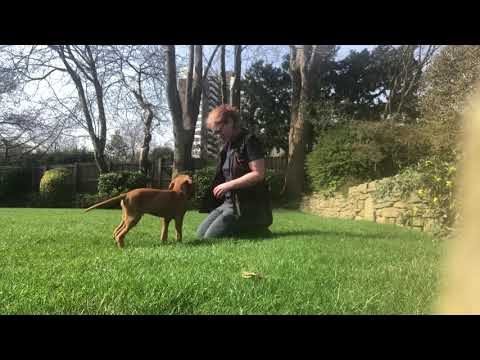

Watch this video on YouTube
If you settled on the second option, the following rule comes into force – teach the survivor to rest in the corner allotted for her. Creating greenhouse conditions when you are close to your pet every minute is not the best option. Gradually accustom the dog to sleep in its place, ideally in a special box of suitable size. This will not only save you from annoying company, but also make the pet more independent and patient.
Hungarian cops are distinguished by a high level of intelligence, but training will still be useful only with the right approach to training the animal. The command “Come to me!” it is better to work out at an early age, when the baby does not leave the owner a single step. From birth, Vizsla puppies tend to carry in their mouths those objects that are of interest, and this is a good reason to teach your pet the “Fetch!” command. It is important not to overdo it, otherwise the cop will get used to holding the thing in her mouth, but not giving it to the owner.
From three months, the intervention of an experienced trainer is necessary. He will test the puppy and give useful recommendations. A short course of educational training (5-6 lessons) will also be useful. The main thing is not to train the survivor for the sake of the process itself and the desire to show off her ingenuity in the circle of dog breeders. Each team should perform the main task – to simplify the interaction between man and animal.
Important: cynologists recommend focusing on the well-being of the puppy. If he is active, it is better to resort to moving exercises. If he wants to rest, it is enough to practice the “Place!” command.
The owner of the Hungarian Vizsla must show patience and perseverance. Rudeness is not the most appropriate tactic for communicating with an animal. Firstly, because of the dismissive treatment, the dog will lose confidence in the owner. Secondly, there can be no question of productive training: the vizsla will not execute the command if you raise your voice or hit the animal. Attentive attitude, understanding and affection are the three pillars on which the training of any dog is based, and the Hungarian Pointer is no exception.
Care and maintenance
Survival owners note that this breed needs simple but mandatory care. The short coat of animals requires weekly combing (no more than twice) with a furminator glove or a natural bristle brush. Combs with rare large teeth are ineffective. Due to the lack of an undercoat, animals shed all year round, but especially in winter and spring. During this period, it is recommended to comb the dog’s coat every day.
It is worth bathing the Hungarian Vizsla only as needed. Frequent procedures dry the skin and gradually wash away the natural protective fatty layer from the coat. Use only pet shampoos for short-haired dog breeds. During the shedding season, use a rubber glove to speed up the removal of dead hairs. In the winter season, “cleaning” with dry shampoo is acceptable, which is rubbed into the coat and then carefully combed out.
For your information: after swimming the Hungarian Pointer in the open water, it is necessary to wash the body of the dog with warm running water. Bathing in worked-out quarries, reservoirs and ponds is undesirable: this is a favorable environment for parasites that cause intestinal and skin diseases.
The next object of attention is the dog’s ears. Healthy auricles without ulcers and rashes, have a pale pink color. As a preventive measure, it is recommended to wipe them twice a month with a moistened cotton pad or drying agent. If the cop shakes its head for no reason or rubs its ears against flat surfaces, contact the veterinary clinic: the cause is an ear mite or a slowly occurring inflammatory process.
The eyes of the Hungarian Vizsla need daily inspection, especially after walking and hunting. If there is no profuse souring and tearing, the owner’s intervention is not required. Morning discharge is acceptable and removed with a cotton pad or a piece of lint-free cloth. Redness of the eyes is a good reason to contact a specialist who will determine the cause of the inflammation. Often this is not only an allergic reaction to food, but also accidental damage, for example, during active running in tall grass.
As for the oral cavity of the cop, you should take care of brushing your teeth, but not more than once or twice a month, otherwise damage the enamel. To remove plaque, use a brush or nozzle on your finger, as a hygiene product – paste for dogs. If the Hungarian Vizsla eats dry food, the dentition is cleaned involuntarily. When only natural food is used, the procedure requires special care. For prevention, you can purchase “bones” from compressed animal veins: they will slow down the formation of plaque.
Note: the use of “human” toothpastes is prohibited. Firstly, they are distinguished by a sharp and unpleasant taste for the animal, and secondly, the hygiene product can cause an allergy to any of the components.
To trim the claws once a month, you need to purchase a nail cutter for large breeds. Burrs and sharp edges are smoothed out with a nail file. Since most dogs do not get excited about this procedure, it is necessary to accustom it from puppyhood. If the Vizsla gets nervous and tries to run away from you, limit yourself to trimming the claws on one paw. The rest should be postponed for the next day. After the procedure, praise your pet for patience and reward him with his favorite treat. This will help establish a trusting relationship and speed up the creation of a neat “manicure” in the future.
There are no special requirements for the nutrition of the Hungarian vizsla. The main conditions are low fat and calorie foods, as well as the presence of nutrients necessary for the full development of the dog. Lean meat (boiled or scalded with boiling water) is an essential component of the natural diet of the cop. It must be supplemented with cereals, seasonal vegetables and fruits, dairy products and boiled eggs (twice a week). The owners of the survivors recommend adding vegetable oil to the animal’s food every day (no more than 1 tablespoon): this will favorably affect the condition of the coat. To replenish fatty acids, you need to give cop fish oil.
Please note: If you have opted for a natural diet, please consult your veterinarian regarding mineral and vitamin supplements for dogs.
For convenience, you can limit yourself to dry and wet food grades of premium, super-premium or holistic, ideally options for dogs with sensitive digestion. The volume of the serving must match that indicated on the package, its increase is fraught with excess weight.
In the diet of a short-haired cop you can not include:
- foods that cause bloating (peas, beans, raw cabbage);
- pickled, salty and spicy food with spices;
- milk with high lactose content;
- raw, boiled or fried river fish;
- tubular bones of any size;
- carbohydrate-containing products;
- smoked and fried foods;
- flour and sweet;
- fat meat;
- berries.
Because this breed is active, the dog’s bowl should be filled daily with fresh water, preferably bottled. Flowing water is also suitable if it is insisted for 6-8 hours before use.
Hungarian Vizsles feel comfortable both in a private house and in an apartment – however, subject to regular walking. Despite the ability to adapt to harsh climates, cynologists do not recommend keeping these dogs in an aviary due to the missing undercoat. For winter walks, it is worth buying warm clothes for the Hungarian vyzsla: a vest or overalls lined with fleece.
Representatives of the breed need a daily two-time walking, each – about 1.5-2 hours. To do this, it is recommended to find a fenced area away from busy traffic and crowds. Only here the cops run enough without a leash and stretch their paws. Sports games – for example, chasing a frisbee or a ball – as well as agility (passing an obstacle course) will help make the walk more fun and active.
Health and disease of the Hungarian survivors
With full loads and proper nutrition, representatives of the breed can boast of stable immunity. Hungarian Pointers are not prone to colds – a rarity for short-haired dogs. However, cynologists identify a number of diseases that are most common in survivors. Among them:
- thyroid dysfunction and, as a result, hormonal disruptions;
- a cancerous tumor (most often in non-sterilized bitches);
- retinal atrophy;
- joint dysplasia;
- epilepsy;
- cataract;
- allergy.
Short-haired cops are vaccinated against more dangerous diseases: enteritis, infectious hepatitis, rabies, leptospirosis, canine distemper. Vaccination is done at two months of age with revaccination after 3 weeks (not counting vaccination in the first 7 days of a puppy’s life). After that, within 2 weeks it is necessary to protect the pet from contact with other people and, if possible, not take it out for a walk. At 6 and 12 months, the Hungarian Vizsla is vaccinated with a complex vaccine with annual revaccination. Treatment for ecto- and entoparasites is also required.
How to choose a puppy of Hungarian vizsla
The first step towards acquiring a healthy dog is to find a specialized kennel. Private breeders offer a lower cost, but at the same time they do not guarantee good health and a balanced psyche of the Hungarian Vizsla.
The next stage is a conversation with the breeder. Ask him to shed light on the nuances:
- titles and awards of parents;
- conditions for keeping a puppy;
- vaccinations made;
- diet.
Your task is to get as much information as possible about the future four-legged friend. Express your desire to “talk” with the male and female: this will help determine the possible defects of the baby. If the breeder evades a direct answer, he has something to hide. In order to avoid the risk, it is worth contacting another nursery.
Now you can start getting acquainted with the litter. Healthy puppies are distinguished by excessive activity and curiosity about the environment. If the baby’s instincts are important to you, arrange a little test for him: tie a game wing to the fishing rod and lower it into the aviary. At the sight of the prey, the puppy of the Hungarian Vizsla will stand up, and this is a sure sign that you will get a great hunter.
Carefully examine the candidates for the role of your friend. A kid with good health is moderately well-fed, clean, not lame and playful towards you. Choose a medium-sized puppy with no noticeable defects. Be prepared for the fact that the appearance of the baby will change with age. For greater confidence in compliance with the breed standard, it is worth stopping at adult dogs.
The gender of the Hungarian Vizsla is an equally important selection criterion. Bitches are distinguished by a more accommodating and friendly character, as opposed to males – independent, wayward and prone to “challenge” the owner’s leadership. At the same time, females often create additional problems during estrus, which can turn into an unwanted pregnancy.
Most often, puppies are put up for sale at 1.5-2 months. At this age, babies have already learned to eat on their own, acquired the skills of primary socialization, are strong enough and ready for a new life without maternal care. Buying a younger age will result in many problems, including an unstable psyche and a weakened immune system.
The price of the Hungarian vizsla
The price of Hungarian Hound puppies is determined by several factors:
- the location and popularity of the nursery;
- dog class – for participation in exhibitions (shows), breeding (breed) or keeping as a pet (pet);
- characteristics of the animal (including compliance with the breed standard);
- awards and titles of parents.
The average cost of a Hungarian vizsla varies from 300 to 800$. Dogs with an elite pedigree can cost owners more, while dogs with defects cost less. People from the bird market are attracted by a low price, but there is a high risk of buying a non-purebred dog with a weakened immune system. You should not spare money for a future companion, because the joyful moments that communication with a Hungarian survivor will give are priceless!





